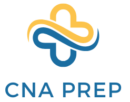CNA syllabus essentials shape your future in healthcare.
- Structured Learning Path: The CNA syllabus provides a well-rounded approach to mastering nursing assistant skills.
- Practical Skillset: Focuses on the critical hands-on clinical abilities every CNA must have.
- Career Preparation: Ensures readiness for both the certification exam and a fulfilling CNA career.
A well-crafted CNA syllabus is your blueprint for success.
- Understanding the CNA Syllabus
- Key Components of the CNA Curriculum
- Clinical Skills for CNAs
- Classroom Learning for CNAs
- Online versus In-Person CNA Education
- State-Specific Requirements for CNAs
- Preparing for the CNA Certification Exam
- Continuing Education for Certified Nursing Assistants
- Career Pathways after CNA Certification
- Conclusion: Leveraging the CNA Syllabus for a Successful Career
Understanding the CNA Syllabus
When contemplating a future in healthcare, specifically as a Certified Nursing Assistant (CNA), grasping the CNA syllabus sets the foundation for your educational journey and career. The syllabus doesn’t just present a checklist of topics; it embodies a structured approach to equip you with essential skills and knowledge, conforming to industry standards and ensuring quality patient care.
What Does the CNA Syllabus Include?
Understanding the CNA syllabus requires examining its typical components:
- Basic Patient Care: This encompasses the day-to-day responsibilities of CNAs, such as feeding, dressing, and bathing patients.
- Anatomy and Physiology: A foundational grasp of body systems informs how you will care for patients with various ailments.
- Infection Control: Learning stringent sanitation practices minimizes the spread of infection.
- Nutrition: You will learn how proper dietary support promotes patient health.
- Vital Signs Monitoring: A critical skill includes recording temperature, blood pressure, pulse, and respiration.
Why Is the Syllabus Standardized?
Standardization ensures that regardless of where you undertake your certification, you emerge with a consistent skill set that meets the baseline requirements of healthcare facilities across the board. This structure instills confidence in employers that a new CNA hire from any certified program is well-prepared for the role.
For those wondering how to maneuver through the CNA syllabus, viewing it not just as a curriculum but as a stepping stone to a pivotal role in the healthcare sector is essential.
Key Components of the CNA Curriculum
The CNA curriculum is specifically designed to cover both theoretical knowledge and practical skills, providing a well-rounded education for aspiring CNAs. Let’s delve into some of the key components:
Theoretical Learning
- Medical Terminology: Communicating effectively with colleagues revolves around understanding common medical terms.
- Patient Rights: You’ll gain insights into the legalities and ethics of patient care.
- Communication Skills: From relaying information to patients to documenting details for healthcare teams, effective communication is vital.
Practical Application
- Clinical Skills: Learning through hands-on experience happens in supervised clinical settings.
- CPR and First Aid: Having these life-saving skills is crucial for emergency situations.
- Care for the Elderly: Specialized training prepares you for working with the aging population.
By breaking down these components, you’re not only getting a glimpse into what you’ll be learning, but also understanding how these elements will serve you in real-world caregiving.
Clinical Skills for CNAs
CNAs are the backbone of daily patient care, and the clinical skills they acquire are indispensable. Here’s what to expect:
- Basic Nursing Procedures: Administering non-invasive procedures is a staple in a CNA’s clinical routine.
- Patient Mobility: You help patients move safely to prevent bedsores and maintain muscle strength.
- Recording Patient Information: Accurate record-keeping is fundamental for patient health monitoring.
This rigorous training is a combination of precise instructions and supervised hands-on practice, which is why the clinical aspect is such a significant focus within the CNA syllabus.
Classroom Learning for CNAs
While hands-on practice is the highlight for many, the classroom learning component is equally important. Here’s a look at what that involves:
- Anatomy and Physiology: It’s about comprehending body systems and their functions.
- Nutrition and Hydration: Understanding the impact of nutrition on health and recovery.
- Infection Control: Learning the protocols for a sterile environment.
Classroom learning offers the theory behind the practice, solidifying the knowledge that you will apply in a real-world setting.
Online versus In-Person CNA Education
Choosing between online and in-person CNA programs can significantly impact your training experience. Let’s weigh the options:
Benefits of Online CNA Courses
- Flexibility: Ideal if you’re juggling other responsibilities.
- Accessibility: Learn from anywhere with internet access.
But remember, hands-on clinical training is a must—something that purely online programs cannot offer.
Benefits of In-Person CNA Courses
- Real-world Practice: Invaluable hands-on experience under professional supervision.
- Interactive Learning: Face-to-face interaction enhances understanding and retention.
In considering your learning style and career objectives, these insights into online and in-person options should guide your decision on how to best embark on your CNA education. Whether it be the traditional classroom setting or a more modern digital approach, it’s about choosing the path that will bolster your grasp of the CNA syllabus and set you on track for a successful career in nursing assistance.
Each educational route presents its unique benefits, but it’s the combination of comprehensive coursework and essential clinical exposure that molds a capable and confident CNA.
State-Specific Requirements for CNAs
As an aspiring Certified Nursing Assistant, it’s crucial to be aware that CNA syllabus requirements can differ from one state to another. Why is this the case? Because state health departments have their own regulations governing what CNAs must know and be able to do. It’s up to you to ensure that your training meets the requirements of the state where you plan to work.
Navigating State Regulations
Knowing how to navigate the varying regulations is key. Here are steps you can take:
- Contact Your State’s Health Department: They will provide the most current and accurate information.
- Review State-Specific Syllabus: What’s mandatory in one state might be optional in another.
- Understand Transferability: If you move states, know how your credentials will transfer or if additional training is needed.
For example, the Georgia Department of Community Health provides guidelines on the specific coursework and clinical hours required to become a CNA in Georgia.
Certification Renewal and Continuing Education
Continuing education keeps your knowledge fresh and your skills sharp. While guidelines vary, typical requirements might include:
- Clock Hours: Number of professional development hours required within a renewal period.
- Content Relevance: Ensuring that the courses taken are relevant to CNA practice.
Flexibility in meeting these requirements is often provided, through various educational activities, as in Georgia’s continuing education packet.
It’s essential to prioritize understanding your state’s unique requirements to ensure your career pathway as a CNA is clear and compliant.
Preparing for the CNA Certification Exam
Once you’ve tackled the CNA syllabus, the next big step is acing the certification exam. A solid exam prep strategy can make all the difference in achieving your certification goals.
Key Strategies for Success
To maximize your chances of passing the CNA certification exam, consider these tips:
- Leverage Study Guides: These can steer your review sessions in the right direction.
- Identify Weak Areas: Focus more study time on topics where you’re less confident.
- Simulate the Testing Environment: Practice under conditions similar to the actual test.
A robust study plan, when based upon the CNA syllabus, improves your familiarity with exam content, ultimately easing exam anxiety. Practice tests and simulators can be especially effective in honing your test-taking skills.
Resources to Aid Your Preparation
Several online resources are available to help you prepare, including:
- Study Guides: These provide a structured review program aligned with the CNA syllabus.
- Practice Exams: Taking these regularly can build your confidence and help identify areas for improvement.
In preparing for the CNA exam, remember that a thorough grasp of the CNA syllabus will serve as a reliable guidepost for what to study. Mometrix’s examination resources are a great place to start.
Continuing Education for Certified Nursing Assistants
Your learning doesn’t stop once you pass your CNA exam. In fact, continuing education is key to furthering your career and staying current in the healthcare field.
Why Pursue Continuing Education?
- Stay Updated: Healthcare is a continuously evolving field, and ongoing education ensures that you remain current with the latest best practices and regulations.
- Advance Your Skills: You can specialize in areas such as gerontology or palliative care, expanding your career opportunities.
Options for Continuing Education
Many educational pathways are open to CNAs, such as:
- On-the-Job Training: Some employers offer training that can enhance or broaden your skill set.
- Formal Courses: Colleges and online platforms frequently provide courses tailored to CNAs looking to advance their careers.
Staying engaged with your professional development means that you’re committed to providing the highest level of care, and open to the myriad of opportunities that advanced training can provide.
Career Pathways after CNA Certification
With your CNA certification in hand, you might be wondering what’s next. The training you received through the CNA syllabus equips you not just for your role but also sets the scene for future advancement opportunities.
Exploring Career Advancements
- Specialized Care Areas: CNAs can specialize in areas such as Alzheimer’s care, hospice care, or pediatric assistance.
- Administrative Roles: With experience, CNAs can move into supervisory positions or healthcare administration.
The spectrum of career pathways after CNA certification is broad and promising. For example, the IntelyCare platform offers insights into career advancements and additional on-the-job pathways for those dedicated to growing within the healthcare setting.
Planning Your Career Growth
Here are some steps to plot your career trajectory:
- Set Clear Goals: Know the direction you want to take and set benchmarks for getting there.
- Gain Experience: Every day on the job is an opportunity to learn and grow.
- Further Education: Consider advancing your education through nursing programs or other healthcare-related courses.
Conclusion: Leveraging the CNA Syllabus for a Successful Career
The journey to becoming a Certified Nursing Assistant is paved with comprehensive syllabus-driven training, state-specific understandings, and innovative preparation strategies. Embrace the CNA syllabus not just as a mandatory part of your education but as a robust framework that propels you toward a gratifying career in healthcare – one where continuous learning and career development are as crucial as the initial certification.
By thoroughly acquainting yourself with the CNA syllabus, you’re doing more than preparing for an exam; you’re laying the groundwork for a noble and rewarding profession that makes a real difference in people’s lives. As you embark on or continue in this journey, remember that each step taken in knowledge and skill acquisition is an investment in your future, a contribution to quality patient care, and a testament to your dedication to the nursing profession.

